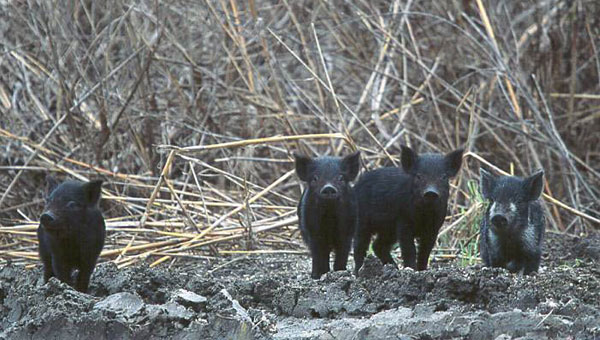Wild Pig*
Sus scrofa

Photo credit: Peter May
Wild pigs first came to America with the Spanish explorers in the 1500s. They were also imported from Germany and Russia in the early 1900s. While they were an important source of food for the early settlers (and are still a popular game animal), they are overpopulating many areas and causing problems.
Florida has an estimated 500,000 wild pigs that cause harm to ground-nesting wildlife like quail, turkey, and even sea turtles. They also carry diseases that can harm farm animals and humans. Wild pigs will eat almost anything including small animals. They use their powerful snouts and teeth to dig for roots, nuts, insects, amphibians, and reptiles. Frequently they will dig in wet ground (like wetlands and stream banks), and this can cause erosion problems.
The male pigs (boars) have particularly large protruding teeth called tusks that make good digging tools, as well as dangerous weapons. The female pigs (sows) can start reproducing at six months of age, and may have four litters of 12 piglets per year - for their 15-year life span. With such voracious appetites and high reproductive rates, wild pigs pose a real problem for Florida's ecosystems.
Learn More
* Intermediates may be asked to identify these animals by tracks.

